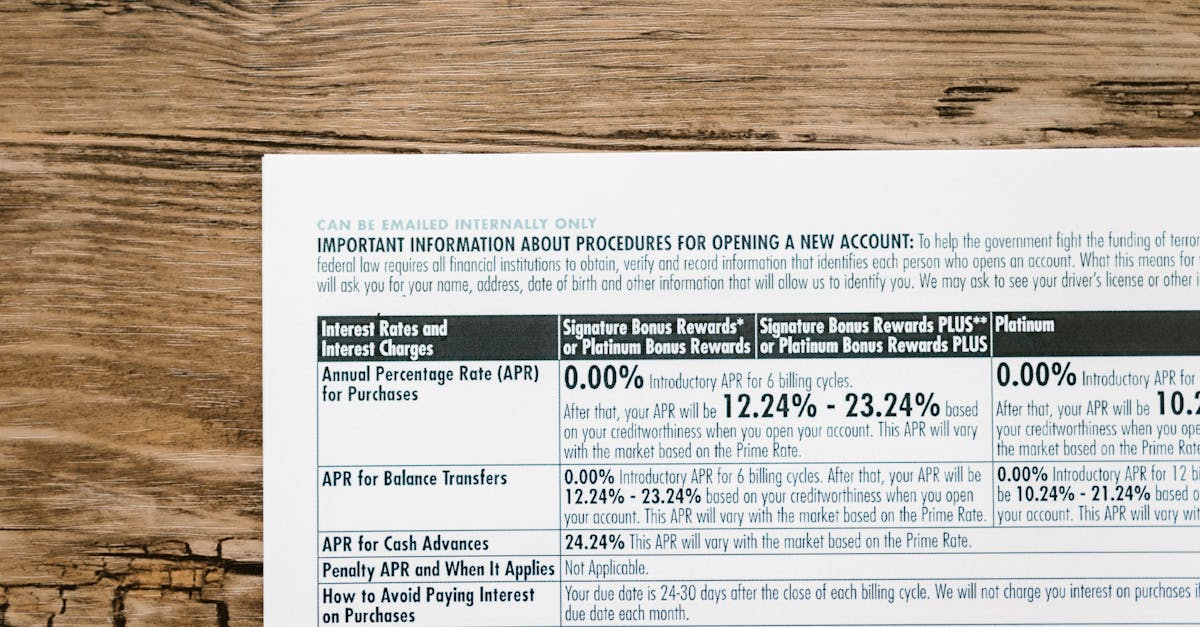Life Insurance: 5 Signs You Might Be Underinsured
When it comes to securing your family’s financial future, having the right amount of Life Insurance coverage is essential. Many individuals overlook this crucial aspect, often leaving themselves underinsured. Being underinsured can lead to significant challenges, especially in unexpected situations. You may feel confident that your current policy meets your needs, but there are often signs indicating otherwise. Recognizing these signs can help ensure that your loved ones are adequately protected. In this article, we will explore five key indicators that may suggest you need to reevaluate your Life Insurance coverage.
Main Points
- You have experienced significant life changes.
- Your policy fails to cover current debts and obligations.
- You haven’t reviewed your coverage in years.
- You rely solely on employer-provided coverage.
- Your family situation has changed drastically.

Understanding the Basics of Life Insurance Coverage
Life insurance can seem overwhelming, but grasping its fundamentals is essential for securing your family’s financial future. At its core, life insurance provides a safety net: a financial payout to your beneficiaries upon your passing. This can help cover living expenses, debts, and even funeral costs. However, not all policies are created equal.
When searching for the best Life Insurance policies, it’s crucial to consider factors like coverage amount, premium costs, and the insurer’s reputation. After all, a good policy should align with your long-term goals and budget. Here’s a simple framework to understand the essentials:
- Determine Your Needs: Understand how much coverage your family requires.
- Compare Quotes: Look for Life Insurance quotes from multiple providers to ensure you’re getting the best deal.
- Assess Affordability: Ensure that the premiums fit within your budget without compromising other financial goals.
By doing your research, you can find affordable Life Insurance that meets your needs. Remember, it’s not just about picking a policy; it’s about protecting what matters most to you.

Evaluating Your Current Life Insurance Policy: Key Questions to Consider
In today’s fast-paced world, reviewing your life insurance is essential. Start by asking yourself, does your policy still meet your family’s needs? Over time, life changes—children grow, and financial responsibilities shift. It’s crucial to ensure your Life Insurance for families provides adequate coverage.
Term Life Insurance Options
Consider the term life insurance options available. Are the terms still favorable? You might find that switching to a longer-term plan could better suit your current lifestyle. Sometimes, replacing an existing policy can offer you more robust benefits at a lower cost.
Assessing Life Insurance Benefits
Finally, evaluate the life insurance benefits you’re receiving. Are there any riders or additional perks you could be missing? Make a list of your current benefits and compare them against what’s available on the market. This simple check can reveal hidden opportunities or savings that you weren’t aware of.
| Question | Consideration |
|---|---|
| Does my policy meet my current family needs? | Reassess your financial responsibilities. |
| Are my term options still beneficial? | Look for competitive rates. |
| What additional benefits are offered? | Check for riders and savings. |
Regular evaluations help to avoid confusion and ensure you’re not overpaying for inadequate coverage. Take the time to make sure your life insurance policy truly reflects your needs and aspirations.

The Importance of Assessing Your Financial Responsibilities
Understanding your financial responsibilities is essential in today’s complex economic landscape. Everyone has different obligations, and assessing them can illuminate areas where improvements are needed. For instance, one might overlook the significance of comparing life insurance policies to select the most suitable coverage. This act may seem trivial, yet it can immensely impact financial security for loved ones.
Furthermore, evaluating monthly expenses against income is crucial. Individuals often underestimate how minor changes can lead to significant savings. Budgeting effectively requires dedication, but the rewards can manifest in reduced stress and enhanced peace of mind. This process may also unveil unnecessary expenditures, aiding in redirecting funds toward more pressing financial obligations.
Why Regular Assessment is Key
Regularly assessing your financial responsibilities cultivates a proactive approach to managing your future. Yet, people frequently postpone this task, believing they’ll tackle it later. However, this delay can lead to rushed decisions when unexpected challenges arise. Thus, prioritize evaluating your finances, ensuring a comfortable and secure future.

Changes in Lifestyle and Their Impact on Life Insurance Needs
As society evolves, lifestyle changes significantly influence our financial decisions, especially regarding life insurance needs. Factors such as increased longevity, changing family structures, and rising health awareness contribute to this shifting landscape. In today’s world, people prioritize health and financial security, leading to a reevaluation of insurance policies.
For instance, younger generations may seek insurance that offers flexibility and investment options, reflecting their dynamic lifestyles. Conversely, older individuals might focus on coverage for dependents, recognizing the importance of supporting loved ones. These differing priorities highlight how personal situations dictate insurance requirements.
Key Lifestyle Changes Affecting Life Insurance
- Increased Longevity: People live longer, prompting a need for adequate financial planning for later years.
- Family Dynamics: Single-parent households and blended families alter insurance considerations.
- Health Awareness: A focus on wellness creates demand for policies that cover specific conditions.
Understanding these shifts is crucial. By recognizing how lifestyle changes impact life insurance needs, individuals can make informed decisions that align with their evolving circumstances. Ultimately, adapting to these changes ensures comprehensive protection for oneself and one’s loved ones.
Common Misconceptions About Life Insurance Coverage
When it comes to life insurance coverage, many people hold onto misunderstandings that can lead to inadequate protection for their families. One prevalent misconception is that only the wealthy need insurance. In reality, life insurance is crucial for anyone who has dependents, regardless of income level. Another myth suggests that employer-provided coverage is sufficient. However, this often doesn’t provide enough coverage for long-term needs. It’s essential for individuals to assess their personal circumstances to determine the right amount of coverage. Additionally, many believe that applying for life insurance is a lengthy process. While it can vary, many policies can be obtained relatively quickly, especially with online applications. Ultimately, educating oneself about these misconceptions can provide greater assurance and security for loved ones in the event of an unforeseen situation. Always consult a professional to tailor a policy that suits your unique needs.
How Inflation Affects Your Life Insurance Needs
Inflation is an often-overlooked factor that can significantly impact your life insurance needs. As prices rise, the purchasing power of your income decreases, making it crucial to reassess your coverage. When you first acquired your policy, the amount you deemed sufficient may no longer hold the same value today.
Consider this: if you have a 20-year-old life insurance policy with a $500,000 death benefit, inflation could mean that amount will only cover a fraction of your family’s needs in the future. Thus, it’s essential to adjust your coverage periodically. This process is not just about increasing the face value; you also need to evaluate your overall financial obligations, such as mortgage payments and education costs.
“Inflation eats away at your financial security.” – Financial Expert
In essence, while inflation may seem like a distant concern, its effects can creep into your financial planning. It’s wise to speak with an insurance advisor to help ensure your death benefit aligns with current economic conditions. Remember, proactive adjustments today can safeguard your family’s future tomorrow.
The Role of Dependents in Determining Adequate Coverage
When assessing adequate coverage, understanding the role of dependents is crucial. Dependents, typically children or other family members who rely on the primary insured, can significantly influence insurance needs. This influence stems from several factors:
- Financial Dependence: The more dependents you have, the greater your financial responsibility. This increases the need for higher coverage.
- Healthcare Needs: Dependents may have specific health requirements, which can necessitate broader coverage options to ensure access to essential services.
- Future Planning: Consideration of your dependents’ future—such as education or support—highlights the importance of long-term coverage solutions.
Furthermore, the loss of a primary earner can create an immediate financial burden for dependents. Therefore, evaluating the number and needs of your dependents helps in tailoring your insurance policies effectively. Remember, adequate coverage isn’t just about meeting current obligations; it’s about ensuring stability for those who rely on you. With evolving family dynamics, reconsidering your coverage is always a wise choice.
Evaluating the Sufficiency of Your Life Insurance Beneficiaries
When it comes to life insurance, many people often overlook the critical step of evaluating their beneficiaries. It’s not just about naming a person; rather, you should ensure your choice reflects your current circumstances. Life is unpredictable, and changes like marriage, divorce, or a new child can alter your needs significantly. However, most people tend to forget about these adjustments, leading to potential complications.
Consider creating a table to assess who you have listed as a beneficiary and the rationale behind each selection. Clarifying roles and responsibilities helps eliminate confusion. For example:
| Beneficiary Name | Relationship | Amount to Receive |
|---|---|---|
| John Doe | Spouse | $500,000 |
This simple act of reviewing your beneficiaries not only fosters peace of mind but can also prevent future disputes. Therefore, evaluating your beneficiary choices can be a straightforward task that offers immense value and security.
When to Reassess Your Life Insurance Policy: A Timeline Guide
Reassessing your life insurance policy is crucial to ensure it still meets your needs. Generally, you should consider a review every few years. Major life events often serve as vital triggers for reassessment. For instance, when you get married or have a child, your coverage needs may change significantly. Additionally, career advancements or shifts in financial responsibilities warrant a thorough evaluation.
It’s also wise to revisit your policy if you find yourself with new debts, such as a mortgage or student loans. These financial obligations can impact the amount of coverage you require. Therefore, keep an eye on your policy benefits and ensure they align with your current situation. Lastly, changes in your health or lifestyle can influence your premiums. Regular check-ins help you make sure your policy remains relevant and cost-effective, avoiding future headaches.
Seeking Professional Advice: How an Insurance Agent Can Help
When navigating the often convoluted world of insurance, seeking professional advice can make all the difference. An insurance agent serves as a valuable resource, guiding you through the complex landscape of policies, coverage options, and potential pitfalls. This support can be crucial, especially for individuals unfamiliar with the nuances of insurance products.
Understanding the Benefits
Engaging with an insurance agent offers several advantages, including:
- Expertise: Agents have in-depth knowledge about various policies and can tailor solutions to your unique needs.
- Personalized Service: Unlike a one-size-fits-all approach, agents consider your specific situation, ensuring you receive the best-fit coverage.
- Claims Assistance: In the unfortunate event of a claim, having an agent means you have support in navigating the claims process effectively.
In conclusion, an insurance agent not only helps simplify your choices but also brings peace of mind. They act as a bridge, connecting you with the right policies and ensuring you’re well-protected. Don’t underestimate the profound impact this partnership can have on your financial security.
Related content:
The Essential Guide to Travel Insurance for Adventurers
Navigating the Complex World of Business Insurance: Essential Coverage for Every Entrepreneur
Home Insurance Demystified: What Every Homeowner Needs to Know
Conclusion
In conclusion, recognizing the signs of being underinsured can significantly impact your family’s financial future. Life insurance should provide reassurance, not anxiety. By evaluating your current coverage and addressing any gaps, you ensure that your loved ones are well protected against life’s uncertainties. If you notice any of the five signs we discussed, it may be time to review your policy and make necessary adjustments. Remember, taking proactive steps today can lead to peace of mind tomorrow, allowing you to focus on what truly matters—your family and their well-being.
Frequently Asked Questions
What is life insurance?
Life insurance is a contract between an individual and an insurance company that provides financial compensation to beneficiaries upon the death of the insured person.
Why do I need life insurance?
Life insurance provides financial security for your loved ones, covering expenses such as funeral costs, debt repayment, and living expenses in case of your untimely demise.
What are the different types of life insurance?
The main types of life insurance are term life insurance, whole life insurance, universal life insurance, and variable life insurance, each with different features and benefits.
How much life insurance do I need?
The amount of life insurance you need depends on several factors, including your income, debts, financial responsibilities, and the needs of your beneficiaries. It’s advisable to consult with a financial advisor to determine the appropriate amount.
How does term life insurance work?
Term life insurance provides coverage for a specific period, such as 10, 20, or 30 years. If the insured person dies during that term, the beneficiaries receive a death benefit. If they outlive the term, the coverage ends.
Can I convert my term life insurance to permanent insurance?
Many term life insurance policies offer a conversion option that allows you to switch to a permanent insurance policy without undergoing additional medical underwriting.
What happens if I stop paying my life insurance premiums?
If you stop paying your premiums, your life insurance policy may lapse, meaning you will lose your coverage. Depending on the policy, you may have a grace period or options to reinstate your coverage.
Is life insurance taxable?
Generally, life insurance payouts are not taxable for the beneficiaries. However, if the policyholder has significant cash value growth in a permanent policy, it may be subject to tax under certain conditions.
How do I choose a life insurance provider?
Consider factors such as the insurer’s financial stability, customer reviews, claims process, policy options, and coverage limits. Research and compare quotes from multiple providers before making a decision.
Can I have more than one life insurance policy?
Yes, individuals can hold multiple life insurance policies to achieve greater coverage or to meet specific needs. However, it’s important to ensure you can afford the premiums for all policies.


